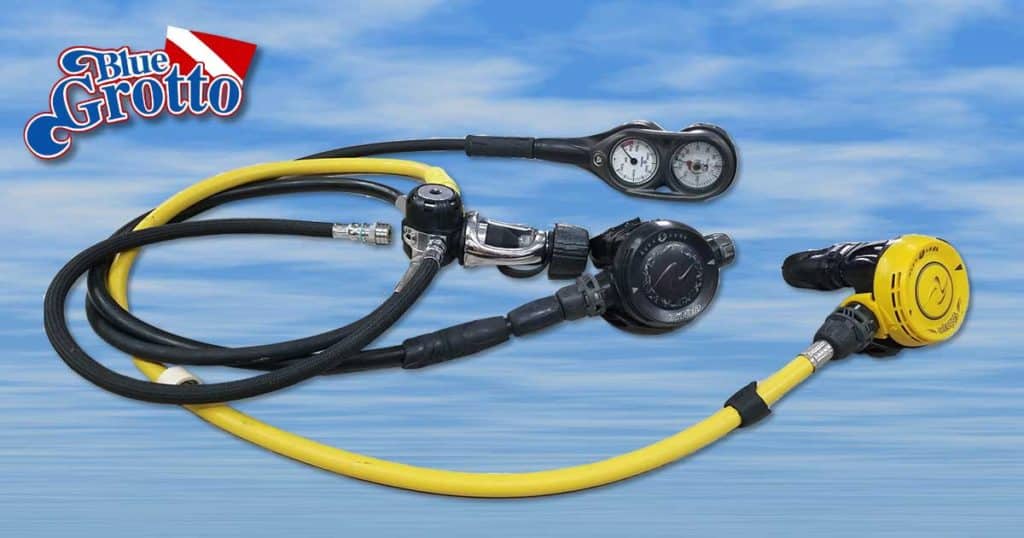Dive vacations are supposed to be fun. But a simple oversight can put a severe damper on your enjoyment. Here is an example of what we mean.
It was a weekday in mid-November. As was typical of the middle of the week, Blue Grotto was not particularly busy. Nevertheless, we had rented out half a dozen regulators by day’s end.
Three of these rentals were to visitors who did not own their own regulators. The other three were to divers who had brought their regs, expecting to use them. So, what happened?
When these particular divers attached their regulators to their tanks, the regs began free flowing. This meant the regulators were unusable. And, if our visitors wanted to dive, they would have to use rental regulators.
They would have to repeat this every remaining day of their dive trip. It would be expensive, time-consuming and create the additional distraction of using unfamiliar gear. It is also something that could have been easily avoided.
Why regulators fail
Regulators can malfunction for a variety of reasons. The most common reason is a high-pressure seat failure in the first stage. This can cause the intermediate pressure to rise to a point where the second stage begins free flowing.
You can prevent this by having your regulator regularly serviced following the manufacturer’s recommendations. What this is will vary by manufacturer.
- Some manufacturers specify that their regulators should be overhauled at least once a year, regardless of how much it was or was not used.
- Others, such as Aqua Lung, specify that their regulators should be overhauled every other year and professionally inspected during the intervening years.
- Still others recommend service intervals in hours. Dive Rite, for example, states that their regs should be overhauled every 200 hours.
What does an overhaul entail?
The typical overhaul involves several steps.
- To start, the regulator is completely disassembled. Items such as O-rings and high- and low-pressure seats are discarded.
- The remaining parts are thoroughly cleaned in an ultrasonic bath.
- The regulator is then reassembled. Discarded O-rings and seats are replaced with brand-new ones from the manufacturer’s service kit. O-rings and other components are lubricated as necessary using a special lubricant.
- The reassembled regulator is then adjusted following the manufacturer’s specifications.
A properly serviced regulator will provide the same performance as a brand-new regulator would.
You would seldom if ever, try to fix just a single problem. Were you to replace, say, just a high-pressure seat, it would be a safe bet that other regulator components were also close to failure.
It takes the same amount of time and effort to do a complete overhaul as it does to fix just a single problem. Thus, doing a complete overhaul is the only type of service that makes sense.
Prevention is the best medicine
The divers mentioned earlier could have saved themselves time and money by doing two things.
- The first is to have had their regulators professionally served at the recommended intervals.
- Then, at least two weeks before leaving for Florida, they should have attached each regulator to a tank to ensure it is continuing to work properly.
Had they done so, Blue Grotto would have lost a little rental income. But the divers would have been happier and would have left the Grotto with better memories. In the long run, that is what is more important to us.


